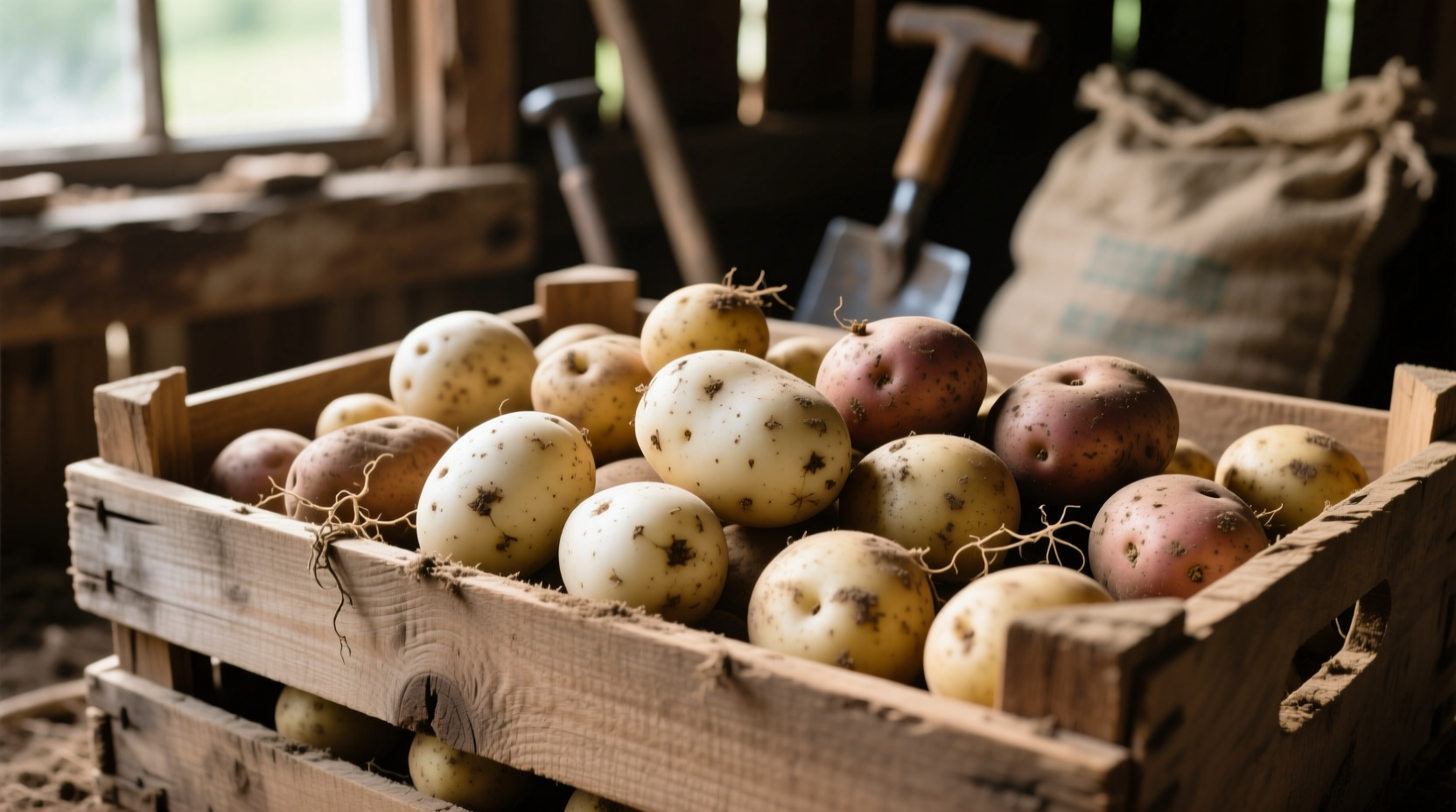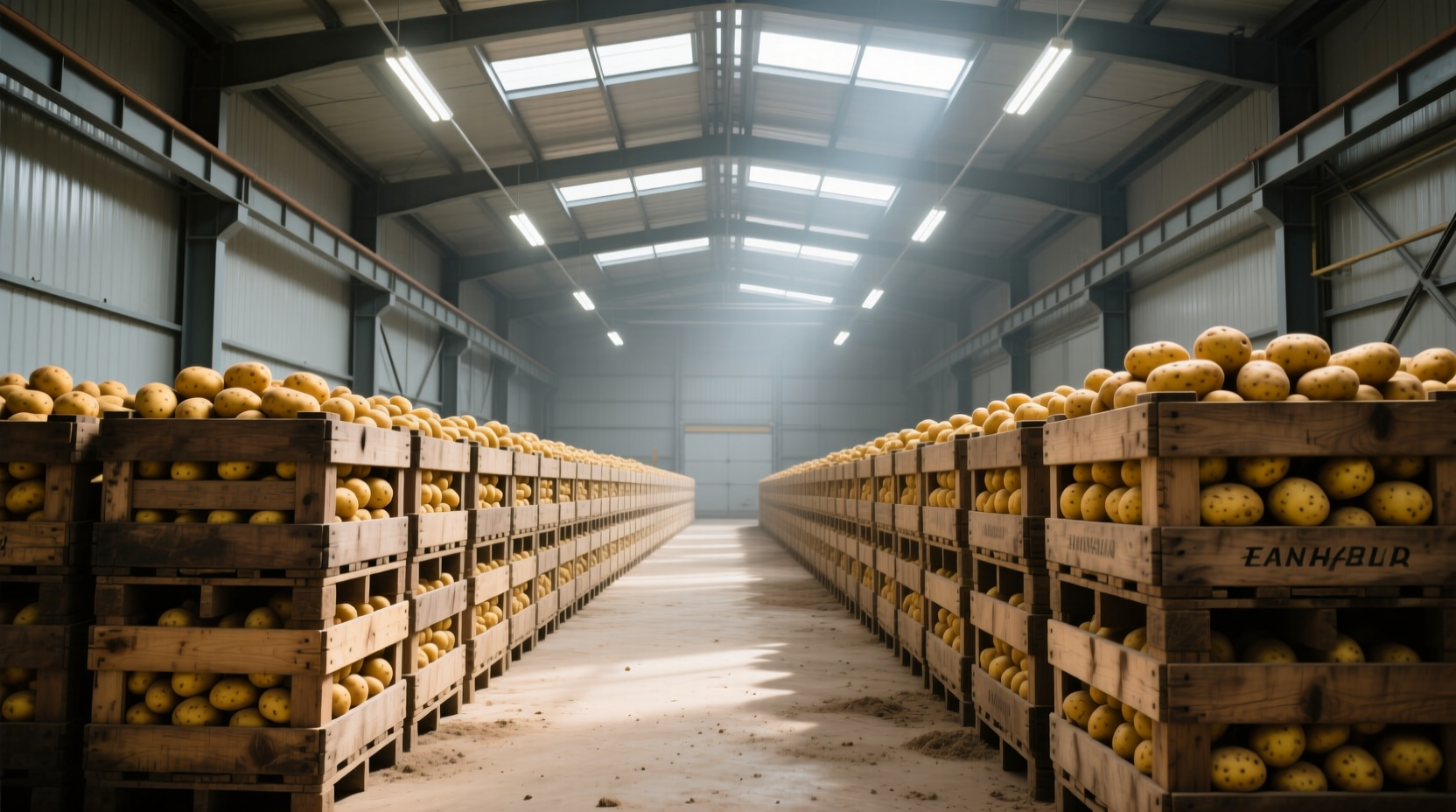Discover the science-backed method to extend your potato shelf life while maintaining flavor and nutritional value. Whether you've harvested your own crop or bought in bulk, these evidence-based techniques prevent waste and ensure your potatoes remain safe to eat for months.
Why Most Home Potato Storage Methods Fail
Understanding common mistakes is the first step to proper storage. Refrigeration triggers sugar conversion that creates harmful acrylamide when cooked, while light exposure causes greening and solanine production. Storing potatoes with onions accelerates sprouting due to ethylene gas exposure.
The Potato Storage Process: Step-by-Step
1. Selecting Potatoes for Long-Term Storage
Choose mature, undamaged potatoes with thick, firm skins. Late-season varieties like Russets, Yukon Golds, and Kennebecs store best. Avoid "new" or thin-skinned potatoes which have higher moisture content and shorter shelf life. The USDA Agricultural Research Service confirms that proper variety selection can extend storage life by 30-50%.
2. Curing Potatoes Before Storage
After harvesting or purchasing, cure potatoes for 10-14 days at 50-60°F (10-15°C) with 85-90% humidity. This process heals minor cuts and thickens the skin. Cornell University's College of Agriculture notes that properly cured potatoes develop suberized layers that dramatically reduce moisture loss and decay during storage.
3. Creating the Ideal Storage Environment
The perfect potato storage conditions balance three critical factors:
| Factor | Ideal Range | Consequence of Deviation |
|---|---|---|
| Temperature | 45-50°F (7-10°C) | <40°F: Sugar conversion; >55°F: Sprouting |
| Humidity | 90-95% | Low humidity: Shriveling; High humidity: Rot |
| Light Exposure | Complete darkness | Greening: Solanine production (toxic) |
Basements, root cellars, or dedicated produce drawers in cool garages typically provide these conditions. Avoid kitchen pantries where temperature fluctuations occur.

4. Choosing the Right Storage Container
Use breathable containers that allow air circulation while maintaining humidity:
- Wooden crates with slats
- Cardboard boxes with ventilation holes
- Mesh or burlap bags
- Plastic containers with perforated lids
Avoid airtight plastic bags or containers which trap moisture and accelerate decay. The University of Idaho Extension confirms that proper container selection reduces spoilage rates by up to 40% compared to improper storage methods.
5. Monitoring and Maintaining Your Stored Potatoes
Check stored potatoes every 2-3 weeks:
- Remove any showing signs of decay immediately
- Wipe away excess moisture with a dry cloth
- Rotate containers to ensure even air circulation
- Discard potatoes with significant greening or sprouting
According to research from the American Journal of Potato Research, regular monitoring reduces total spoilage by 25% compared to "set and forget" storage approaches.
Storage Limitations: When These Methods Don't Apply
Understanding context boundaries prevents storage failures in special situations:
- Refrigeration necessity: Cut or cooked potatoes must be refrigerated below 40°F within 2 hours
- Short-term storage: Potatoes for immediate use (1-2 weeks) can stay in pantry conditions
- Commercial operations: Large-scale storage requires precise humidity control systems
- Frost risk: Temperatures below 40°F require alternative storage methods
The National Potato Council emphasizes that recognizing these limitations prevents dangerous food safety mistakes while maximizing storage effectiveness.
Potato Storage Timeline: What to Expect
Different varieties have varying storage lifespans under ideal conditions:
- Russet potatoes: 4-6 months
- Yukon Gold: 2-3 months
- Red potatoes: 2-3 months
- Sweet potatoes: 3-5 months (requires slightly warmer 55-60°F)
- Fingerling potatoes: 1-2 months
Signs your potatoes have exceeded their storage life include excessive sprouting, shriveling, soft spots, or strong earthy odors. Discard any potatoes showing significant greening.
Common Potato Storage Mistakes to Avoid
- Storing potatoes and onions together (both emit gases that accelerate spoilage)
- Washing potatoes before storage (increases moisture and decay risk)
- Using non-ventilated containers like sealed plastic bags
- Storing near heat sources like water heaters or furnaces
- Keeping potatoes in the refrigerator for long-term storage
Extending Potato Shelf Life: Advanced Techniques
For those seeking maximum storage duration:
- Add an apple to your storage container (absorbs ethylene gas)
- Place a damp towel in dry environments to maintain humidity
- Store potatoes on a bed of clean straw for additional insulation
- Use digital hygrometers to monitor exact temperature and humidity levels
These methods, validated by agricultural extension services, can extend storage life by 15-25% beyond standard practices when implemented correctly.











 浙公网安备
33010002000092号
浙公网安备
33010002000092号 浙B2-20120091-4
浙B2-20120091-4